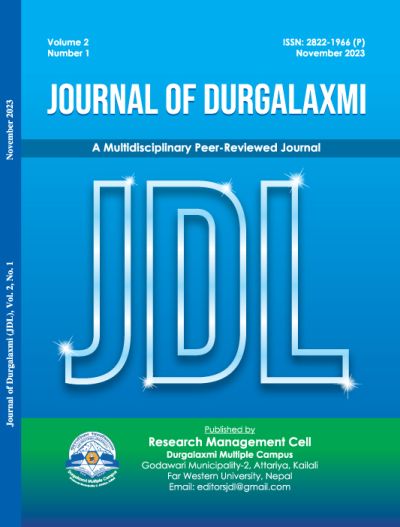Value Added Tax Registration and E-filling Status in Revenue Administration in Nepal
DOI:
https://doi.org/10.3126/jdl.v2i1.65400Keywords:
VAT, PAN, e-filling, non-fillers, ICTAbstract
Nepal has also improved the implementation of VAT since 1998 both legally and administratively due to liberalization. A key problem facing revenue administrations in many developing countries is operating manual paper-based recording systems henceforth e-filling systems address this issue (William & Huang, 2019). This research was designed descriptively and secondary data was used ranging from FY 2065/66 to 2078/79. The number of VAT registrations sharply increased during the study period. The main reason behind to rise in VAT registration is simplifying the VAT procedures, introducing or launching the ICT, and wide coverage of business in VAT and PAN by IRD. To sum up, both VAT and PAN registration numbers were rising during the study period. Similarly, the average VAT and PAN registration numbers were 170334 and 899714 respectively. Both VAT non-filers and income tax non-filers taxpayers were fluctuating during the study period with 27.04% and 48.6% on average. The non-filler taxpayers under VAT and income tax were the highest at 38.46% and 58.36% in FY 2076/77 and FY 2067/68 respectively during the study period. The non-filler VAT and income taxes were still 33% and 45% in the fiscal year 2078/79. The reason behind the rise from 25.10% of VAT non-filler to 2076/77 and last year was that due to COVID-19 international and national cases and lockdowns around all places of Nepal, almost all businesses were closed suffering from COVID-19. Hence, the implementation of the efilling system needs to be effective and tax-friendly for the taxpayer.
Downloads
Downloads
Published
How to Cite
Issue
Section
License
Copyright (c) 2023 The Author(s)

This work is licensed under a Creative Commons Attribution-NonCommercial 4.0 International License.
CC BY-NC: This license allows reusers to distribute, remix, adapt, and build upon the material in any medium or format for noncommercial purposes only, and only so long as attribution is given to the creator.




